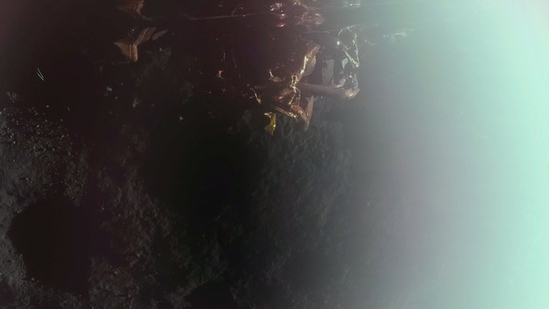First Moon image captured by Firefly Aerospace's Blue Ghost revealed
This marks a monumental moment in space exploration as it is only the second private mission to achieve the milestone.
Firefly Aerospace's Blue Ghost just captured its first image from the moon and it is stunning!

The first social media post by Firefly Aerospace said the snapshot embodies everything Blue Ghost stands for: bold ambition, unstoppable drive, and the spirit of innovation.
The company said the image was a testament to the hard work and dedication of the team that created this pioneering mission to the Moon.
“Would you look at that view! BlueGhost captured its first image on the Moon that embodies everything this bold, unstoppable Firefly team has worked so hard for over the last 3+ years. And we’re just getting started,” the company wrote on X.
This marks a monumental moment in space exploration as it is only the second private mission to achieve the milestone -- and the first to do so upright.
Blue Ghost lands on the moon
Firefly Aerospace's Blue Ghost Mission 1 landed on the lunar surface after 3:34 am US Eastern Time (0834 GMT) near Mons Latreille, a volcanic formation in Mare Crisium on the Moon's northeastern near side.
The development was confirmed by CEO Jason Kim adding that the spacecraft was “stable and upright.”
Nicknamed "Ghost Riders in the Sky," the mission is part of a NASA-industry partnership aimed at reducing costs and supporting Artemis, the program designed to return astronauts to the Moon.
The Blue Ghost spacecraft carries 10 instruments, including a lunar soil analyzer, a radiation-tolerant computer and an experiment testing the feasibility of using the existing global satellite navigation system to navigate the Moon.
Blue Ghost to capture high-end imagery of March 14 eclipse
Designed to operate for a full lunar day (14 Earth days), Blue Ghost is expected to capture high-definition imagery of a total eclipse on March 14, when Earth blocks the Sun from the Moon's horizon.
On March 16, it will record a lunar sunset, offering insights into how dust levitates above the surface under solar influence -- creating the mysterious lunar horizon glow first documented by Apollo astronaut Eugene Cernan.






